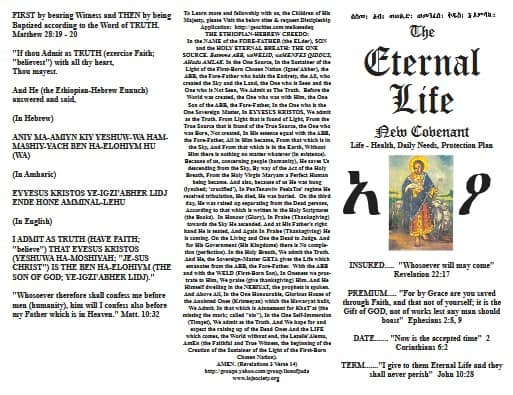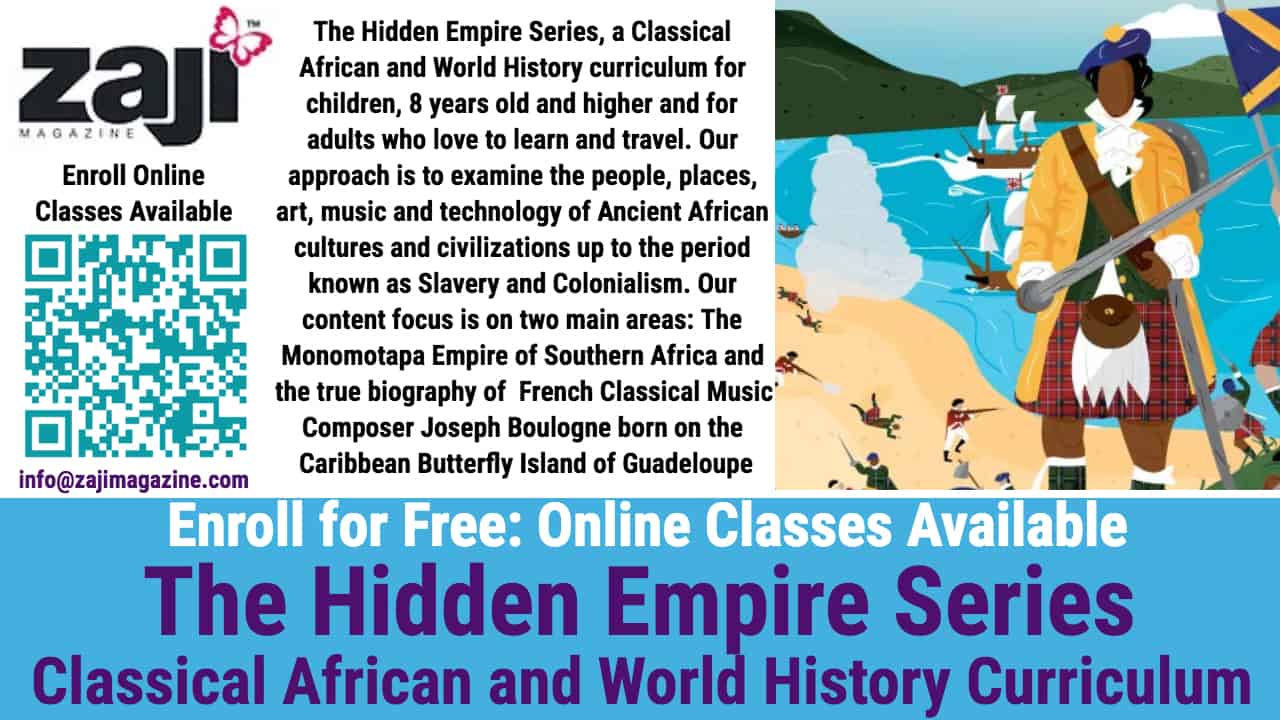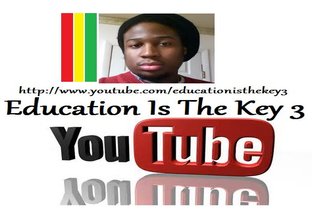Shortly after college, I began chasing something many people want but few ever get: a job they love.
I left school with a biology degree and a job in the medical field. It took me about two weeks to realize I absolutely hated it.
I was working 6 days a week, waking up at 3:30am in order to be at the hospital by 5:30. Making next to nothing, I quickly racked up $10,000 in credit card debt. I knew deserved more but I had no idea how to get it.
I saw people in my graduating class living in New York or San Francisco, making six figure salaries and going on exotic trips. I often wondered what they had figured out that I hadn’t. What was their secret?
I dedicated the next 12 months of my life to finding the answer. In this article I’m going to share everything I learned along the way.
First, I’ll walk you through the exact process you can use to get a job interview at your dream company even if you don’t know a single person there — you won’t even need to apply online.
Next, I’ll teach you how to ace the interview process, get the offer, and land a salary you deserve.
I personally used these exact strategies to get interviews and offers at companies like Google, Uber and Twitter. They are also the same tactics that my students have used to land interviews and offers at Google, Microsoft, Slack, Deloitte, PWC, American Express, ESPN and more.
Referrals Are The Most Effective Way To Get Hired
A recent LinkedIn survey on talent trends showed that 1 in 3 people were actively looking for new work. As of January 2017, the population of employed people in the United States was 123 million. This means that, at any given time, 41 million people are looking for work.
On average, an open role at a well known company gets ~250 resumes. 75% of these resumes came from some sort of online portal (like the company’s online application, or a career aggregator site like Indeed.com).
Once submitted, these applications are screened by Applicant Tracking software that scans them for keywords. At the end of the process, ~5 resumes make it into the hands of a recruiter. That’s 2% at best.
Additionally, The Wall Street Journal published an article stating that 80% of jobs aren’t advertised online.
That means that 75% of people applying for jobs are all competing for 20% of the opportunities!
Oops.
When it comes to getting hired, referrals are the most effective way to secure an interview and land the offer. Here are some stats from a recent Jobvite survey:
- 40% of hires come from referrals, the next largest channel is via career sites at 21% (almost half as many)
- Referrals get hired in an average of 3 weeks while other applicants take up to 7 weeks
- Referrals get paid more on average than cold applicants

Finally, over 50% of six figure jobs are filled via referral.
Moral of the story? If we want to get hired at our dream job, we need to find another way to get a referral from an insider.
The problem is, many of us don’t happen to have friends or family working at places like Google.
Part 1: How To Get A Job Interview When You Don’t Know A Single Person At The Company
Know Your Role (And Find It)
The first step is having a solid idea of the specific role you are looking for, down to the company and title if possible.
Next, you need to make sure that role is available. For today, let’s assume that you want to be an Account Manager in the Technology B2B vertical at Google. Looks like a spot is open in New York:

Locate Potential Influencers
Next, you are going to find someone who not only knows about the role, but could potentially have an impact on hiring for it. Time to fire up LinkedIn.
In the search bar, plug in the company name + all of the information I highlighted above (title, vertical/industry, preferred city). However, before you hit “Search,” we need to remember that you are looking for someone who can influence the hiring process.
With that in mind, I usually use a title that is one level up from the position that I’m looking for.
If you’re not familiar with title hierarchy structures in the corporate world, here is a quick guide (if you are already familiar with how titles are structured, feel free to skip this section):
Side Note: A Brief Guide To Company Organizational Structures By Title
Every company has a hierarchy starting at the top with the CEO/Founder all the way down to the entry level employees. When researching companies, especially people to speak to within those companies, it helps to know where certain titles fit in the food chain. That way you can ensure you are talking to the right person.
Here is a general list of titles that fits almost any company, starting at the top:
- C-Level (CEO, CTO, CFO, COO, etc.)
- Vice President (VP)
- Director
- Senior Manager
- Manager
- Coordinator (Entry Level)
Associates, Executives, and Seniors
In many companies, the above titles have some sort of variation that allows for greater segmentation within that level. The most common forms of this are Associate, Executive, and Senior. Here is what those mean:
Associate: this title is usually given to someone who is halfway between positions for some reason (maybe there is typically a 4 year gap between levels and they are 2 years in). A person with Associate in their title is usually one notch below a person with the original title. For example, an Associate Account Manager would most likely be one level below an Account Manager.
Senior: this title is the more experienced version of an Associate. People with Senior in their title are usually one notch above the original title. For example, a Senior Account Manager would be one notch above an Account Manager.
Executive: this title is usually given to people who are very senior, or around the level of Vice President. The two most common cases are Sales Executive/Account Executive (synonymous terms for a senior salesperson) or Executive Vice President who is two notches above a Vice President and one notch above a Senior Vice President. That should be all the info you need to make an educated decision around where people stand within the company you are researching.
Now that you’re familiar with the company structure, let’s get back to finding that influencer who can help you land this job.
Since we are looking for an Account Manager role, the next step up would be Senior Account Manager so your LinkedIn search would look like this:

Our first result? A Senior Account Manager who works in B2B at Google:

Obtaining Contact Info
Now we’re going to reach out and set up a meeting. It’s best to do these in person but over the phone can work well if you’re dream job is in another state or country.
In order to get in touch with our influencer, we’re going to need their contact info. Here are 3 strategies you can use to find almost anyone’s corporate email address:
This one is obvious but it’s a big time saver and definitely worth the 10 seconds it takes to check.
On the person’s profile, right under their picture, there can be a button labeled “Contact Info” (I say “can be” because people have the option to remove it). Occasionally, people will have their email address listed right there — voila!
If not, let’s move right along…
Reverse Lookup
Head over to Voila Norbert and enter the first and last name of the person you are searching for, as well as their company’s website. For example, if we were trying to find Larry Page’s email, our form would look like this:

Once it spits out their email you can confirm it using MailTester.
Matching Formats
If that doesn’t work, you can try finding someone else’s email at the company and use that format reverse engineering your target email address.
For example, using Larry Page again, if I know that my buddy John Smith’s email is john at google.com then I can assume that Larry’s email is larry at google.com.
The easiest way to get a hold of a company email address is to reach out to someone in sales or media because both of these departments usually have inbound lead forms and people on the other end ready to pounce on those leads.
We can also use our LinkedIn method here and target salespeople.
Salespeople almost always have their corporate email listed on their LinkedIn because it’s a free win for them. If someone is looking for their product and then finds them on LinkedIn, boom — they just got an effortless inbound lead.
Once you have the format, you can use MailTester to confirm your target email address.
Research, Research, Research
Now that you have your potential influencer, it’s time to do some research so you can effectively reach out and build that relationship.
Start with the usual suspects — LinkedIn, Facebook, Twitter, Instagram, etc. and look for common points of interest. To be honest, most people are better at this online research thing than I am, so I’ll get back to the meat here.
One thing I will say is, don’t skimp. The more you get to know this person beforehand, the better your chances of landing a referral from them.
Some people have said to me, “Austin, isn’t this a little weird? I feel like I’m kind of stalking this person.” I totally get it. However, this information is critical for quickly building a strong relationship and getting that referral.
Also, in my experience, people tend to expect that you’ve done some research on them. The key is to understand what is kosher to bring up out of the blue and what isn’t.
People are OK with you checking out their LinkedIn, but they may be a little weirded out if you mention that picture from Saturday’s Bar Crawl you saw on Facebook.
My general rule of thumb is this: if it exists on LinkedIn, it’s fair game to bring up. If you found it somewhere else (Twitter, Facebook, etc.) use a different method. For example, if I see that my influencer is a skiing fanatic, I may bring up that I went on a ski trip a few weeks beforehand.
Sending The Email
Now that you have your potential influencer and their contact info, it’s time to reach out. Not only is this one of the scarier parts of this process, it is also the most pivotal.
To help you get past that hump, I’ve included the exact email script that I used to reach out to people. In this case, I’m reaching out to Tim who works at Google:
Subject: Quick Question
Hi Tim,
My name is Austin and I currently work at Cultivated Culture. I was browsing through LinkedIn and came across your information — I hope you don’t mind me reaching out of the blue here.
I saw that you have extensive experience in Google’s Technology B2B vertical and I’m very interested in learning more about that space. I would love to have the opportunity to run some questions by you, as well as tap into any advice you may have given your knowledge of the industry.
I know that your time is extremely valuable so please don’t feel to need to respond in depth. If you do have 5 minutes to chat, I would really appreciate it.
Best,
Austin
There are a few key points to the email above:
- Address the person you are emailing by name
- State who you are and make it personable
- Include some flattery that positions the person as an “expert”
As for the subject, Fast Company did a study where they emailed 1,000 C-level executives from Fortune & Inc 500 companies. They found that the subject line “Quick Question” made up 66.7% of total replies. I saw similar results.
All of that said, this script is just a framework. You will most likely need to tweak your emails to fit the situation.
When that time comes, I recommend checking out Sam Parr’s incredible guide on how to cold email like a boss (Sam has started conversations with Jeff Bezos and Brian Lee (aka Jessica Alba’s Honest co-founder) via cold email). It’s the same guide I used to help craft my email templates.
Now hit Send!
Prepare For Your Meeting
In order to prepare, we have to know what we’re preparing for. The goal of your meeting is to position your influencer as an expert, make them feel special, and build a relationship.
You should not and will not mention anything about the opening at their company. People innately enjoy helping others and if you follow the steps above, they will bring this up naturally.
You will want to prepare a list of questions that gets them to open up about themselves and the company. I like to ask them several softballs to get things warmed up and then hit them with a few questions they are guaranteed to remember.
Here is a quick set that I’ve had success with in the past (I’ve found the last one really seems to stick):
- I saw you worked at [Previous Companies]. How did you end up going from [First Industry] to becoming interested in [Current Company]?
- You hear a lot about [Current Company] in the news, but I’d love to hear more about why you love working there. What’s your favorite part?
- What is one totally unexpected lesson you’ve learned from working at [Current Company]?
The “Million Dollar” Question
Regardless of the questions you choose, there is one that you must always be sure to ask:
“What is the biggest challenge your team is facing right now?”
Really dig in here, get them to be specific. This information is going to be critical in helping you land a referral from this person, as well as getting the offer farther down the road.
Your Homework: Adding Value (In A Big Way)
Okay, so you met with your influencer, things went great, and you identified a major pain point that the team is having. Now we’re going to focus on that last piece.
Over the next week you are going to research the crap out of your influencer’s problem. Then you are going to come up with a solution and draft up a proposal for how you would solve it. Your proposal should include:
- A summary of the problem (to illustrate that you understand their pain)
- A step-by-step framework of how you would solve this problem
- A brief outline of how your skill set positions you as an asset to implement that solution
Truthfully, this process deserves a post of its own but this should give you a good idea of what you need to do. If you’re the type of person that likes concrete examples, check out this guerrilla usability test that Raghav Haranran for Airbnb.
Once you have all of this information, consolidate it into a Word document, head over to Upwork, and hire a graphic designer to make your proposal look amazing. If you’ve never hired on Upwork before, here is an amazing guide by Dave Nevogt on how to do it right.
Following Up With Your Proposal
Now we’re going to reach back out to our influencer with the proposal. Here’s the template I used:
Hi [Influencer],
Thanks again for taking the time out to chat last week.
I spent a lot of time thinking about what you said regarding [team’s biggest challenge]. In fact, I created a short framework that should help you solve it. Please find that attached.
If you have some time, I would love to chat about it in more detail.
Please let me know if you have any questions, I’m looking forward to hearing your thoughts!
Best,
Austin
It’s very important that you do not mention the open position in any of your emails or the proposal. Be patient and wait for their response. When they do get back to you, they will not only bring up the opening but they will ask you if you’re interested.
Kindly accept and play it cool. You’re in!
Part 2: How To Breeze Through The Interview Process
Fast forward — our influencer passed along our resume to HR and they have reached out to set up a phone screen. Once we get past that, we’ll be on to interviewing with the team, and then getting the job.
A note to developers: The advice below does not cover technical interviews, which are typically required for developer/software roles. However, the advice below will help create more time to prepare for technical interviews by minimizing the amount of preparation needed for other parts of the interview process. If you are applying for a development role, I suggest you read Cracking The Coding Interview by Gayle Laakmann McDowell.
[Insert Company Name] Interview Template
Interviews can be daunting, especially at companies like Google, Amazon, or Uber. I’m sure you’ve read the horror stories about crazy questions they ask people like “Quick — How many golf balls can fit inside a school bus,” or, “how many gas stations are there in Manhattan?”
The truth is, most of these companies have done away with those questions. They crunched the numbers and found that the answers didn’t correlate with high employee performance (shocker, I know). In fact, Google’s own Senior Vice President of People Operations called them a “complete waste of time.”
These companies have since reverted back to the standard style of interviews, which is great for us because it makes it much easier to identify patterns. We can essentially “guess” what questions will be on the test and prepare answers that will blow our interviewers away (it works way better than it did in college, I swear).
Here is the process I used to prepare for each one.
Nailing The Basics: Questions You’ll Get In Every Interview
According to renowned career guru Penelope Trunk, one of the easiest ways to be a better interviewer is to prepare for the most obvious questions. You may be saying “well duh,” but you’d be surprised by how many people spread themselves too thin by trying to prepare answers to every possible question.
99% of the interviews you go on will follow the exact same template. If you can master the format, your confidence will skyrocket and you’ll be prepared for almost any situation you get thrown into.
The Universal Job Interview Format:
- Tell me about yourself (your experience, why you are interested in this role, etc.)
- A mix of behavioral questions, which we’ll dive into shortly
- What questions do you have for me (the interviewer)?
Let’s tackle each individually.
Tell Me About Yourself
This is your first impression. More importantly, it’s the only part of the interview that you totally control. Do NOT rattle off your resume like a grocery list.
In order to nail this part you need to craft an interesting story — your story. You want it to be concise (around 2–3 minutes) and you need to think about what you want to convey. I recommend:
- Choosing 2–3 themes to build your story around (for me, those themes were Persistence, Agility, and Success)
- Including quantitative metrics whenever possible
- Addressing the question of why you want to leave your current position (they are going to ask you this anyways, addressing it early shows that you’re aware it’s a concern of theirs and helps put them at ease)
To help get you started, here is what my story looked like. To give you some context, I was a biology major who was interested in landing a job in digital marketing:
Growing up, like most people, I wanted to be a doctor. I went to [college] where I majored in biology and planned my course to medical school. Not long after, I decided that pre-med wasn’t for me. I wanted to get into digital marketing, and I wanted to be in New York. I set my sights on this goal and created a plan that would get me there.
In 2013, I graduated with my biology degree and took a job in medical device sales where I worked from 5:30am — 12:30pm covering surgical cases in the operating room. Then, every day, I would come home and study digital marketing until 8:00pm. In order to gain relevant experience, I got certified in Google Analytics & AdWords and created my own consulting firm that focused on using search engine marketing to generate leads for private golf communities. We were able to increase home sales by an average of 20% while reducing the cost per lead by around 10%. Armed with my new credentials, I began to look for positions in New York.
Eventually, I was offered a position at my current company (a promotional analytics company in New York). During my tenure there I have grown my book of business by 467%, spearheaded the creation of an internal group dedicated to marketing the company on the internet, and helped close the second largest deal in company history.
However, the company has restructured several times since I was brought on. I’ve had 3 different managers over the past year, as well as 3 titles with different sets of responsibilities. I’m looking for something a bit more stable and [company I am interviewing at] has been somewhere that I have wanted to work since I got into this industry. I’m really excited to have this opportunity.
Pro Tip: You are telling a story. Don’t be afraid to embellish a bit. I’m not saying you should lie or make up stories, but you want to sell yourself and you can bet your butt that your competition isn’t afraid to inflate their credentials.
Behavioral Questions
Next up is the dreaded set of behavioral questions. The ones meant to tease out your thought process and your ability to be a “team player.” This is the part where our educated “guesses” are going to come in handy.
The behavioral section is broken down into two parts that I call Standard Questions and Company Specific Questions. Let’s start with the former.
Standard Questions
You are going to be asked a variation of one, if not all, of these questions in every single interview you go to:
- Why do you want to work for us?
- Tell me about a time you exhibited leadership
- Tell me about a time where you had to work as a team
- Tell me about a time you’ve had to work with a difficult person, or difficult people
- Tell me about a time you failed
- Tell me about a time you overcame an obstacle
- Tell me about a time when you had success
If you can answer these 6 questions, you can handle 9 out of 10 interviews with no other preparation and be totally fine. Just follow the same set of rules I mentioned above in the Tell Me About Yourself section:
- Craft a concise story
- Make sure to include quantitative metrics that illustrate your success
- Anticipate and address objections
Company Specific Questions
These are questions that fall in the middle of the 7 listed above and “why are man hole covers round?” Never fear though, we can anticipate these too.
Head over to GlassDoor. If you’ve never heard of GlassDoor, it’s a great resource for any job seeker that includes salaries, reviews, and interview information for almost any company in the world.
First, you are going to search for the position you’re applying for. In keeping with our theme, we’ll search for “Google” under Companies & Reviews:

Next, we’re going to click on the “Interviews” Tab:

Then scroll down and click on “Filter Interviews” which will bring up some advanced settings. Here we’ll type in the title of the job we want (Account Manager, in this case) and the location (New York, NY). We’ll also select “Received Offer” because the people who didn’t receive offers tend to be slightly, ahem, biased:

This will pull up a list of reviews from everyone who interviewed and received an offer for that position. The general comments are really helpful, but we want to focus on a section called Interview Questions towards the bottom. I usually comb through 10–15 of these and add all of the interview questions into a Word doc so I can answer them later:

Now you have your second set of questions to prepare for.
What Questions Do You Have For Me?
Finally, once they are done peppering you with questions, your interviewer will ask if you have any questions for them. This is the most crucial part of the interview.
Why? Because so many people neglect it. If you can ask some questions that are even slightly outside of the box, I’ve found that really sticks with the interviewer more than any other part of the meeting.
After every interview I’ve been on, I asked for feedback. Without fail, the interviewer made a positive comment about the questions I asked. The good news for you is that I asked the same exact questions in every single one. Here they are:
- What is your favorite part about working here?
- What is the biggest challenge you are facing right now?
- Let’s say that, in one year, you are looking back on this hire. What has that person done to exceed expectations on every level?
- Ask about a current event (for example — I saw that [Competitor X] came out with this product. How do you see that affecting your business?)
- What is the most unexpected lesson you’ve learned while working at [company]?
- Tell me a little bit more about you, what do you like to do outside of work?
These questions work because they are based on specific principles of behavioral psychology. They break down barriers and help build a positive association in your interviewer’s mind. If you’re interested in the details, you can read more about it here.
Say Thank You
While we’re on the subject, be absolutely sure to send a thank you note to everyone you interviewed with. Also include a personal touch to each one (something that you gained from that last question).
Many people I talk to say “but I don’t have their email.” Ask for it! At the end of every interview always, always ask for a business card or write down the person’s email in your notebook.
If you forget, try using the techniques I outlined above for finding people’s emails and you should be fine.
Part 3 — Following Up & What To Do If They Say No
This is one of the most common mistakes I see from job applicants. I understand how nerve wracking it is to sit there and wait while everything is completely out of your hands.
One of the toughest things I had to learn throughout my interview process was that, while this is a HUGE deal to you, it’s really just another agenda item on the hiring manager’s schedule.
They will get back to you, and if they don’t? You don’t want to work for someone who doesn’t have the courtesy of replying to the people they do business with.
When Can I Send Them A Reminder?
The rule of thumb is one business week. If you interviewed on a Tuesday, wait until the next Tuesday to email them (as J.T. O’Donnell says, never send a nudge on a Monday). When you do, don’t push or be blunt. Keep it short and sweet:
Hi [Interviewer],
I hope you had a great week!
I wanted to quickly follow up and see if there was anything else I could help with regarding the application process. If so, please let me know.
Best,
Austin
That’s it. If they don’t respond to that after another 3–4 days, you have your answer and it’s time to move on.
What Happens If They Say No?
Ugh. The worst case scenario. Don’t get down just yet though, we’re not done here.
I have this quality where I have trouble taking “no” as an answer. When I was interviewing with Google, the initial screener told me that she wasn’t going to put me through because she “didn’t think I was qualified, and didn’t want to waste the team’s time.”
I was not happy. So I sent her this:
Hi [Recruiter],
Thank you again for carving out the time to speak this afternoon. I really appreciate your feedback, and I wanted to add one final note:
I completely understand your concerns regarding my experience with [skill]. You are correct that I didn’t have much experience with that at [previous company]. That said, this doesn’t stem from an inability to produce results, but rather a lack of opportunity to do so.
While my experience on paper may not match up to the initial expectations of the position’s description, I have do have two qualities that work in my favor: I am an extremely efficient learner, and am also very effective at translating those learnings into practice. Second, I’m much more tenacious than your average individual. My career has hinged on these two qualities.
I left college with no digital experience and a biology degree — all of my digital knowledge was obtained through self study. I spent 8 months selling myself without the on-paper experience to back it up. When I was finally given the opportunity to apply my knowledge in a business setting, I playing a critical role in landing the company’s 2nd largest deal in history. I am confident that I can have the same success in this role. I have the resources necessary to learn what I need in order to be successful at [company], and am prepared to do whatever it takes to make that happen.
I understand that [company’s] interview process is extremely challenging, and that only the top talent ends up with an offer letter at the end. I also believe that I am worthy of a shot at that letter. [Company] is known for hiring people who excel at the intangibles, as well the ability to learn new things and apply them to existing knowledge. That is my forte.
I am not asking for an offer. I am simply asking for the opportunity to speak with the hiring manager to make my case for the position. I’m sure you will find the best person for the position, I would just like to have a legitimate shot at being that person. If you give me that chance, my next set of answers will not disappoint.
Thank you again for your continued consideration.
Best,
Austin
Now that may be a little aggressive…
Ok, it was pretty aggressive. But she wrote me back an hour later and pushed me through to the next round! Mission accomplished.
The moral of the story here is, don’t give up if you get a “No.” Try to identify why you were turned down and then send a note to hiring manager addressing those items (feel free to copy mine).
Taking Action
There you have it. The exhaustive, step-by-step guide to landing an interview and then getting an offer from the company of your dreams. What are you waiting for? Get out there and start researching!








































































































